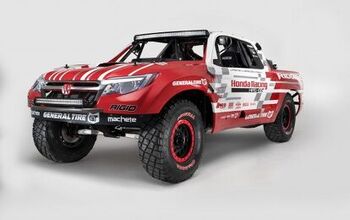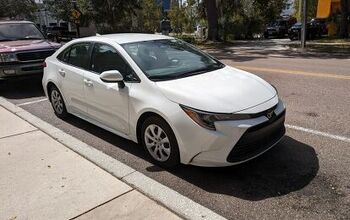Attention Truckers: Honda Will Milk You

If you only get excited by the sausage of a car and not by the sausage making of a car factory, hop on to the next article, because this will utterly bore you. Everybody gone? Alright, talking to myself again. We’ve always said, not really in jest, that two industries profit the most from just in time manufacturing: The real estate industry and the trucking industry. Honda wants some of that money.
Just in time made real estate prices around car factories soar. This is where suppliers build warehouses where they pile up parts for timely delivery across the road. Whether the parts come from far away or down the road, they must be trucked. Sometimes in very inefficient partial loads of parts. Each day at a car factory is a mad zoo of hundreds of trucks. Whatever savings there are in just in time, this is where they go to waste.
Honda decided to do something about it. Saving costs of manufacture is high on the agenda of Japanese automakers, and Honda found a simple way to drive down cost: They’ll drive down to the suppliers themselves and pick up the parts. Why would that be more efficient?
Under what they call the milk-run method, one truck goes on a planned route and picks up parts from multiple suppliers. One truck instead of 7 or 10. A full load. Only one truck back at the dock at the factory. Honda estimates to cut transportation costs by 10 to 20 percent using that system. According to The Nikkei [sub], Honda will to a milk-run dry-run in May with seven suppliers. Beginning in 2013, it will be all milk-runs.
Honda has a lot riding on those milk trucks. Honda brings in around 70 percent of its parts from the outside, a rather shallow in-house manufacturing depth. The shrinking Japanese market and the high yen makes Honda look for ways to cut the fat so that domestic production of 1 million units still makes sense.

Bertel Schmitt comes back to journalism after taking a 35 year break in advertising and marketing. He ran and owned advertising agencies in Duesseldorf, Germany, and New York City. Volkswagen A.G. was Bertel's most important corporate account. Schmitt's advertising and marketing career touched many corners of the industry with a special focus on automotive products and services. Since 2004, he lives in Japan and China with his wife <a href="http://www.tomokoandbertel.com"> Tomoko </a>. Bertel Schmitt is a founding board member of the <a href="http://www.offshoresuperseries.com"> Offshore Super Series </a>, an American offshore powerboat racing organization. He is co-owner of the racing team Typhoon.
More by Bertel Schmitt
Latest Car Reviews
Read moreLatest Product Reviews
Read moreRecent Comments
- Kwik_Shift_Pro4X Where's the mpg?
- Grg These days, it is not only EVs that could be more affordable. All cars are becoming less affordable.When you look at the complexity of ICE cars vs EVs, you cannot help. but wonder if affordability will flip to EVs?
- Varezhka Maybe the volume was not big enough to really matter anyways, but losing a “passenger car” for a mostly “light truck” line-up should help Subaru with their CAFE numbers too.
- Varezhka For this category my car of choice would be the CX-50. But between the two cars listed I’d select the RAV4 over CR-V. I’ve always preferred NA over small turbos and for hybrids THS’ longer history shows in its refinement.
- AZFelix I would suggest a variation on the 'fcuk, marry, kill' game using 'track, buy, lease' with three similar automotive selections.


































Comments
Join the conversation
The manufacturing company I presently work for is pretty small both in size and volume and has almost everything save very large components arrive LTL. Freight costs are a killer. The last manufacturer I worked for had rather high output, but I doubt it would exceed that of an average single auto assembly plant. It wasn't enough that suppliers set up plants/warehouses nearby, but the company did consume almost the entirety of a large warehouse across town from the plant. All of the various supplier owned&managed inventory went to this one warehouse as did some of the company's overflow inventory. The warehouse had its own trucking service that kept a couple trucks circulating between the warehouse and plant delivering exactly what the plant needed from among the various suppliers' inventory that was stored there. The manufacturer was able to keep their inventory turns just north of 15 (entire in-plant inventory changed-over on average 15+ times per year) and climbing despite assembling over 60 distinct models of similar class products. My current employer is crowing loud about boosting inventory turns to just about 3, showcasing the problems with LTL deliveries and low throughput. For automakers the inventory turnover is important because their revolving credit is utilized to carry inventory which consumes working capital. The longer it takes to revolve inventory the more interest you are paying to carry inventory and the larger portion of revolving credit you require.
Honda since the 80's produced soybeans in Ohio and exported them back to Japan in empty car containers (import car parts, export soybeans - they make money on this even to today). Japan has very limited land for agricultural use so they import the vast majority of resources and foodstuffs. Honda also found a way to ship food products on railways.